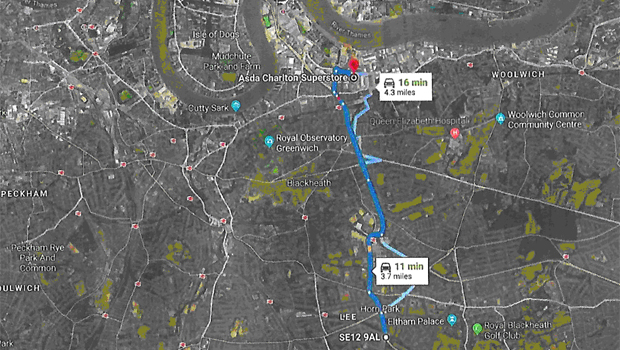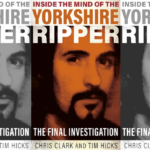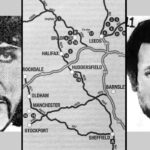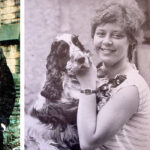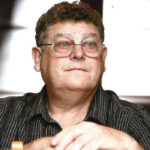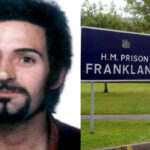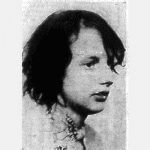The Ripper’s Lorry Murders 1: Bedgebury Forest Woman
by TIM HICKS and CHRIS CLARK
~~~~~
Until now, the conventional wisdom was that all of Sutcliffe’s attacks were launched from his car. Chris, however, was convinced that this was not so and conducted his research on the basis that Sutcliffe used his lorry on some of the murders.
In this article the authors have collated all the cases Chris has identified as committed from Sutcliffe’s lorry, not his car. They are shown as V5 in Column F “Vehicle Used” in Table 13, (link below):
The cases are not in chronological order for editorial reasons of space management and to group some cases by force area in each article. They are in six parts as follows:
- The Ripper’s Lorry Murders Part 1. Bedgebury Forest Woman.
- The Ripper’s Lorry Murders Part 2. Ilkley: Proof positive.
- The Ripper’s Lorry Murders Part 3. More ligature killings.
- The Ripper’s Lorry Murders Part 4. Leicester, Doncaster and Sheffield.
- The Ripper’s Lorry Murders Part 5. Bristol, London, Sussex and Essex.
- The Ripper’s Lorry Murders Part 6. “Hope”: More witnesses.
For editorial reasons, they may not be published in chronological order.
Background: Sutcliffe’s access to lorries
Here, Chris sets out the story in his own words:
“Sutcliffe then started employment as a lorry driver on the 29th of September of 1975 working for a Common Road Tyre Company, Okenshaw situated at the junction of the M62 Motorway and a spur off the M606 into Bradford; the work involved short and medium distance hauls all over the North and the Midlands. He used the experience to familiarise himself with the network of motorways and trunk roads linking its destinations to each other including the best access routes to many towns and city centres an art that he perfected from his already overall extensive knowledge that he had gained from socially driving around the North of England, the Midlands and London and Home Counties.
However after just over a fortnight’s employment on 15 October 1975 he was caught stealing second hand tyres and the police were informed. Sutcliffe was arrested and during the following year after entering a guilty plea at a later court hearing on 5 March 1976 he was fined and he was later sacked in that April for bad time keeping.
In October 1976 Sutcliffe finally found work as a lorry driver for T&WH Clark (Holdings Ltd) situated on the Canal Road Industrial Estate between Shipley and Bradford. They were a small engineering transport firm and working for them took him all over the country and involved a lot of overnight stops where he would use the bunk bed in the rear of the cabin and he was once on his own again with no one to account to and left to his own devices. He started proving himself over several months in one of the firm’s four and six ton big rigid Lorries and then onto a Ford Transcontinental which at £250,000 was the most expensive and advanced HGV vehicle in England at the time.
Sutcliffe clearly suffered from ‘little man syndrome’ as well as ‘obsessive compulsive disorder’ and enjoyed the height, mass and speed of the lorry; as well as spending hours cleaning and polishing both the inside and outside of the cabin whilst awaiting loading and unloading. This would have removed any forensic evidence from the cab.
At work Sutcliffe was one of Clark’s most conscientious drivers who kept immaculate logs and repair records. His workmates saw him as a loner who never showed any sign of violence did not swear or speak crudely about women although he christened his lorry ‘Wee Willie’ which was a source of amusement for them. Sutcliffe was well liked by his bosses and colleagues alike and was recognised to be brilliant at roping-and-sheeting large and often difficult loads. He was the person that everyone turned to when they got a delivery ticket for an unfamiliar town he had ‘A-Z’ street maps for every possible destination.
At Clark’s at the beginning of 1980, Sutcliffe must have felt he had got a really secure job even a job for life. The firm had been forced to sack all their drivers for alleged thefts from the loads but not him. He had been the one exception the one driver Chairman Tom Clark felt he could trust. Yet there were those at Clarks who had noticed Sutcliffe’s habit of occasionally turning up at work with false number plates on his car. A fact considered insignificant by his workmates, at least until the first weekend of 1981.
The management had been so impressed with Sutcliffe regarding him as possessing all the virtues required by the best lorry drivers that he was chosen to appear in a promotional brochure for the firm. In the following photograph he is shown hair in place, beard neatly trimmed as usual behind the wheel of ‘Wee Willie’ and a giant enlargement of the photograph was given pride of place in the entrance to the firm’s offices.”
It is now clear that Sutcliffe used his lorry – not just his car – to commit murders. This verifies the authors belief that Sutcliffe’s offending was not just confined to West Yorkshire and Greater Manchester, but potentially covered every force area in the UK that Sutcliffe’s work as a lorry driver took him to, as shown in the lead illustration. That is, all over England and parts of Southern Scotland.
Sutcliffe was forensically aware and never fouled his car with forensic evidence from his victims’ death. The authors believe it possible that when using his lorry, Sutcliffe:
- Enticed victims into the cab then drove them to the place where they were subsequently killed on the basis that they were going there to have sex.
or, alternatively,
- The victim was enticed into the cab to have sex (the lorry had a sleeping space in the cab), then -because a prostitute would probably not agree to being driven away from her patch, when she could have sex in the cab- murdered in the cab using a ligature, which left limited forensic traces.
Sutcliffe was very well regarded at Clark’s Transport for keeping his lorry clean and for being meticulous about cleaning the cab. Obviously to remove any forensic evidence.
This leads us to one of the strangest murders in modern times.
“Margaret”/ “Bedgebury Forest Woman”(Case 58) Kent Police
“Bedgebury Forest Woman” refers to an unknown female whose body was found in Bedgebury Forest, Kent. Despite a highly commendable and determined investigation by Kent Police over many years, this woman has never been identified. As is their practice in murders where the victim is unknown, the authors have assigned her a name. In this case “Margaret”.
The investigation fell into four phases including the trial:
Phase 1: The initial investigation. The body was found by a woman riding on horseback through Bedgebury Forest on Tuesday, 23 October 1979. It had been beaten and the face mutilated. A bloodstained wooden stake was found near the victim’s body.
The autopsy established that:
- The victim had been bludgeoned to death and died from massive head injuries.
- She had been dead for up to five days prior to discovery.
- She had an ectopic pregnancy which had been present for 4–6 weeks and bleeding for 2–3 weeks. She would have been in severe pain.
- Stretch marks on her stomach indicated that she had probably given birth to at least one child.
- She had prominent, visibly decayed teeth, her molars were very worn down and she had wisdom teeth which indicated that she was at least 30 years old. There was no evidence of her ever receiving any dental treatment.
- No nicotine staining was found on the victim’s hands, teeth or lungs, indicating she was a non-smoker.
- The victim’s lungs did not exhibit the carbon deposits typical of a city-dweller, indicating that she probably lived in the countryside.
There were no items at the deposition site that could be used to identify the victim.
The original description released indicated that Margaret was:
- White, aged between 30 and 35, about 5 feet 1 inches till with a slight build.
- Facially she had brown eyes, her shoulder length hair was straight and dark brown in colour.
- Margaret was wearing a black polo neck jumper, a yellow blouse, a distinctive floral dress and black shoes. The dress was homemade from furniture fabric. It had been altered once to the hem and again to the chest area.
An artist’s impression of what she looked like was created (see below).
In December 1984, the victim was featured on an episode of the BBC TV programme. Crimewatch (here at 23 minutes) in which it was described (accurately in the authors opinion) as the hardest case that Crimewatch had ever covered.
Police stated on the programme that they believed the victim was very poor and that the dress –which was the best clue available to the investigation- had been purchased at a charity, or second hand shop. An appeal was made for the person who made the dress to come forward.

The image above is of the first artist’s impression of Margaret, superimposed on a photograph of the dress.
Incredibly, the Crimewatch appeal for information was successful and the case featured for a second time in the next programme in January 1985 here at 1 minute. It was revealed that the woman who made the black-and-white dress had made contact. She was from Stratford-upon-Avon and stated that she had given the dress to a charity shop in Evesham, Worcestershire. However the police were unable to trace it back to “Margaret”.
Lorry-driver Harry Pennells from Ticehurst, East Sussex became a suspect, but there was insufficient evidence to charge anyone and the case was closed, ending Phase 1 of the investigation.
Phase 2. Re-investigation: The case was re-opened in October 1998, to take advantage of new forensic science techniques that allowed the generation of DNA profiles from much smaller samples than had been previously possible.
In January 1999, retired lorry-driver Harry Pennells aged 75, of Ticehurst, East Sussex was charged with “Margaret’s” murder.
Mr Pennells, had worked for Henley’s Transport based in Kent. He had originally been questioned by police a few days after the discovery of the body and was interviewed three times over 1979 and 1980. However, using more advanced DNA analysis, specks of blood found in his lorry in 1979 were re-examined and confirmed to be Margaret’s. Mr Pennells was therefore arrested and charged.
On the 22nd of February 1999, the victim’s case was featured on Crimewatch for a third time here at 22 minutes
As a result of improved forensic techniques more information was released including an updated description. Margaret was now believed to be:
- Aged 25 – 35, not 30 – 35.
- Build: Medium, not slight.
- Eyes: Hazel, not brown.
- She had prominent decayed teeth.
- A better image of Margaret was also produced.
Kent Police confirmed that after being purchased at the charity shop, the dress had been altered to shorten the length, remove the zip from the back and add a lace ruff to the collar.
They believed that “Margaret” was a London based prostitute, possibly working in Spitalfields area of Central London and was a regular hitchhiker along the M1 or the M6 and may have had a connection with the Vale of Evesham. There was a possibility that she may have been working as a sex worker, operating from Spitalfields in London.
Phase 3. The trial: At the trial, the prosecution accused Mr Pennells of picking up “Margaret” at Spitalfields Meat Market on the 19th of October 1979, taking her in his lorry to a delivery in Keighley, West Yorkshire, then returning with her to Bedgebury forest on the 20th October, where he beat “Margaret” to death with a wooden stake.
The evidence against Mr Pennells was:
- Samples of blood and flakes of hair found in a sleeping bag on the passenger seat of the lorry matched the DNA profile of the victim.
- Additionally, particles of foam from a mattress in the cab of the lorry were found on the victim’s dress.
- Two witnesses stated that they saw and spoke to a young woman who was with Pennells at the Keighley lorry depot.
- Witnesses from his work at Henley Transport’s Rochdale depot also stated that they saw Pennells with a woman with a similar appearance to the police artist’s impression of Margaret.
Mr Pennells pleaded not guilty, his defence was that he admitted picking up a female hitchhiker who may have been “Margaret” but was adamant that she was alive when he left her. According to this very detailed article by the Birmingham Post & Mail:
“Mr Pennells told the court he had picked up a female hitch-hiker at a service station on the M1, near Northampton, on October 19 and she had wanted to get to Liverpool. The woman, who said her name was Margaret or Marjory and lived in Stepney, East London, then changed her mind and decided to travel to London with him when he returned home the next day after making a delivery of fruit.
Mr Pennells said: “Just before we got to London, she said there was no use going home as her landlady had gone to friends at the seaside.” She asked if I drop her off as she was going to Dover to meet her mates to go to Scotland.”
Mr Pennells told the court he dropped the woman off at the Dutch House pub on the A20 in Eltham, South London, and did not see her again. He claimed he had not picked up the hitch-hiker for sex.”
Mr Michael Hill QC, defending, told jury members that the prosecution case relied on circumstantial evidence and had several holes in it.
He said there was no evidence to link Mr Pennells with the scene of the murder or to prove that the murder victim had been in the cab on the date of the offence.”
Two defence witnesses stated that they had seen a woman matching “Margaret’s” description in Bedgebury Forest on the 21st of October 1979, the day after the prosecution alleged Mr Pennells had murdered her.
The trial lasted for four weeks, after which Pennells was found not guilty in a unanimous decision made after the jury deliberated for 1 hour and 15 minutes.
Phase 4. Fresh Appeal: In October 2007, the charity Missing People appealed to the public for someone to come forward and identify the woman. Unfortunately this did not result in any progress.
Both authors are satisfied that Mr Pennells was entirely innocent of any wrongdoing and his acquittal was entirely appropriate and predictable:
- Mr Pennells confirmed that the deceased may have been a woman that he had given a lift to Keighley in Bradford on the 19th of October and then back down the M1 to London on the 20th of October. The inference being that he had spent the night in his cab. Hence the presence of fibres from the sleeping bag in his cab on her dress.
- The presence of her blood in the cab did not have a sinister aspect, because Margaret was bleeding from an ectopic pregnancy at the time she was in the cab.
- She had been seen in the lorry depot at Keighley, Bradford with Mr Pennells of her own free will. Her presence in Mr Pennells cab was entirely consistent with her lifestyle as a prostitute that regularly hitched lifts up and down the M1 with lorry drivers in return for sex. A common practice amongst lorry drivers at the time, sometimes known as “A ride for a ride”, which is not a criminal offence.
- The prosecution was unable to refute Mr Pennells evidence that after he had taken Margaret to Keighley, he returned with her to London and had dropped the deceased off at a public house on the A20.
- Two witnesses independently verified that they had seen the deceased on the 21st of October. The day after the prosecution alleged that Pennells had murdered her.
So, in summary, there was an innocent explanation for all the forensic evidence and two witnesses confirmed she was still alive after Mr Pennells was alleged to have murdered her – hence, no doubt, the reason the jury unanimously cleared him after only one hour and fifteen minutes of deliberation.
The authors have identified four other cases where men were accused of murders that may have been committed by Peter Sutcliffe. These are:
- The 1972 murder of Judith Roberts. Wikipedia article here.
- The 1974 murder of Wendy Sewell. Wikipedia article here.
- The 1977 murder of Carol Wilkinson. Wikipedia article here.
- The 1977 murder of Stephanie Spencer. Northern Echo article here.
Fortunately for Harry Pennells, in this case the jury got it right.
The authors believe that Sutcliffe should be considered as a suspect in this murder because:
- Margaret’s murder is consistent with Peter Sutcliffe’s modus operandi:
- Margaret was a prostitute which is consistent with Sutcliffe’s victim preferences and she may have been selling herself in Yorkshire or in truck stops.
- The method of death (blunt force trauma to the skull) is consistent with Sutcliffe’s preferred method of murdering his victims.
- Sutcliffe travelled up and down the M1 in his lorry regularly, which like Pennells’, had a sleeping compartment. He also routinely used prostitutes from various red light districts.
- One of the areas that Peter Sutcliffe and his colleagues regularly delivered to in London was the LEP Transport Depot Freight Forwarding & Associated Trade Company just off the A2 at Charlton (now a Business Park with an Asda Superstore). (See lead illustration) Sutcliffe was familiar with this part of London, having been in neighbouring Deptford when Sonia was at the Teacher Training College during 1970-1972.
There are a number of intriguing possibilities as to what happened after Mr Pennells dropped “Margaret” off at the Dutch House pub in Eltham:
- Did another lorry driver pick up “Margaret” from the Dutch House pub in Eltham and give her a lift to Central London so she could ply her trade at Spitalfields Meat Market?
- Did Sutcliffe know “Margaret” from a chance encounter at Keighley or on the M1, or having picked her up in Spitalfields Meat Market, or truck stops on other occasions?
- Did Sutcliffe pick up “Margaret” from the pub on the A20, or in the vicinity, or from her working area of Spitalfields, promise her a lift up the M1 after he’d made a delivery in Kent and then take her to Bedgebury Forest, perhaps on the pretext of having sex in the woods, only to murder her, using a convenient piece of wood, because he had left his murder kit at home in Bradford?
We will leave the last word to Kent Police:
“Detective Sergeant Shelley Chantler of the Kent and Essex Serious Crime Directorate said: ‘The tragic death of an unidentified woman found in Bedgebury Forest, near Tunbridge Wells, in October 1979 remains unsolved.
‘The cold case team carries out regular reviews into unsolved murders, rapes and other serious offences, and while the evidence surrounding this particular death is not currently being re-examined it is important to remember that no case is ever truly closed.
‘We continue to appeal for information that may help us identify new lines of enquiry, and urge anyone who can help to call us on 01622 654863. Alternatively you can call the independent charity Crimestoppers on 0800 555111 or complete the online form at www.crimestoppers-uk.org”
Appeal for information

Peter Sutcliffe pictured in his TW Clark lorry, circa 1976
Did you see Peter Sutcliffe or his Ford Transcontinental lorry in:
- Smithfield Market?
- The Dutch House pub in Eltham?
- The LEP Transport Depot just off the A2 at Charlton?
- Near Bedgebury Forest?
Did you see a woman matching the description of “Margaret”:
- In the lorry depot at Keighley, Bradford?
- At a truck stop on the M1 or M6?
- At Evesham in Worcestershire?
- At Smithfield Market?
- At the Dutch House pub in Eltham?
- In a red light district in London or Yorkshire?
If you have any information on the Bedgebury Forest mystery that you want to pass on confidentially, you can talk to a journalist by contacting the North Yorks Enquirer using our letters@nyenquirer.uk address. All responses will be treated in the strictest confidence.



